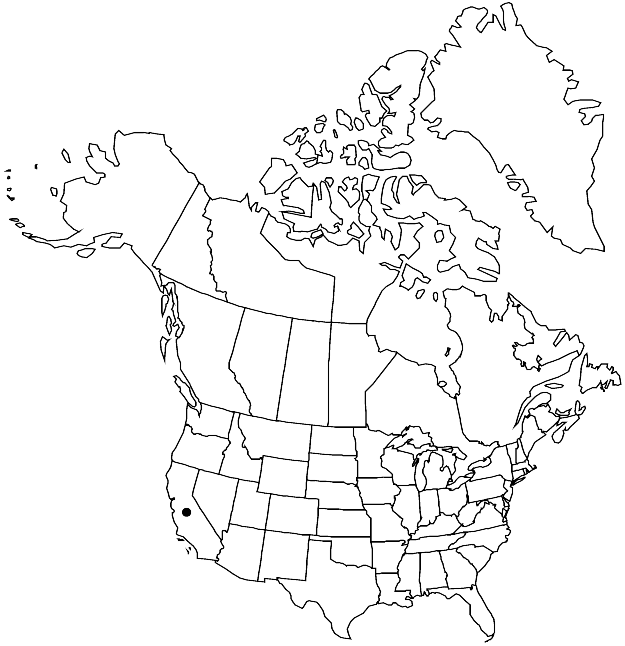Streptanthus bernardinus
Pl. World 20: 216. 1917.
Perennials; (caudex woody, often elevated); (glaucous), glabrous, (petioles and sepal apices pubescent). Stems unbranched or branched (few), 2.5–8.6 dm. Basal leaves not rosulate; petiolate (petioles ciliate); blade oblanceolate to spatulate, 2–8 cm (7–-25 mm wide), margins remotely dentate apically. Cauline leaves: blade ovate to lanceolate, 2–10 cm × 5–28 mm (smaller distally), base amplexicaul, margins entire, (apex acute to acuminate). Racemes ebracteate, (lax in bud). Fruiting pedicels divaricate-ascending, (straight), 4–7.5 mm. Flowers: calyx campanulate; sepals (ascending), pale-yellow to white, (broadly oblong to ovate) 5–9 mm, not keeled; petals white, 7–11 mm, blade 2–4 × 1–1.3 mm, margins not crisped, claw 6–9 mm, wider than blade; stamens nearly tetradynamous; filaments: median pairs (distinct), 6.5–8.5 mm, lateral pair 4.5–5.5 mm; anthers (all) fertile, 3.5–4.5 mm; gynophore 0.5–1.5 mm. Fruits ascending to spreading, smooth, straight or curved, flattened, 5–12.7 cm × 1.5–3 mm; valves each with obscure midvein (at least distally); replum straight; ovules 36–56 per ovary; style 0.8–2.5 mm; stigma subentire. Seeds oblong, 2–3 × 1.4–2 mm; wing 0.1–0.2 mm wide at apex. 2n = 28.
Phenology: Flowering Jun–Aug.
Habitat: Dry open pine or cypress woods, chaparral
Elevation: 1200-2500 m
Distribution

Calif., Mexico (Baja California)
Discussion
Streptanthus bernardinus is known from San Bernardino and San Diego counties; in Baja California it is restricted to Sierra Juárez and Sierra San Pedro Mártir.
The chromosome number 2n = 14, reported by R. C. Rollins (1993) and by R. E. Buck et al. (1993), must be an error for n = 14. No other species of Streptanthus or its immediate generic relatives has such a low number.
Selected References
None.
Lower Taxa
"elongated" is not a number."thick" is not a number."dm" is not declared as a valid unit of measurement for this property.